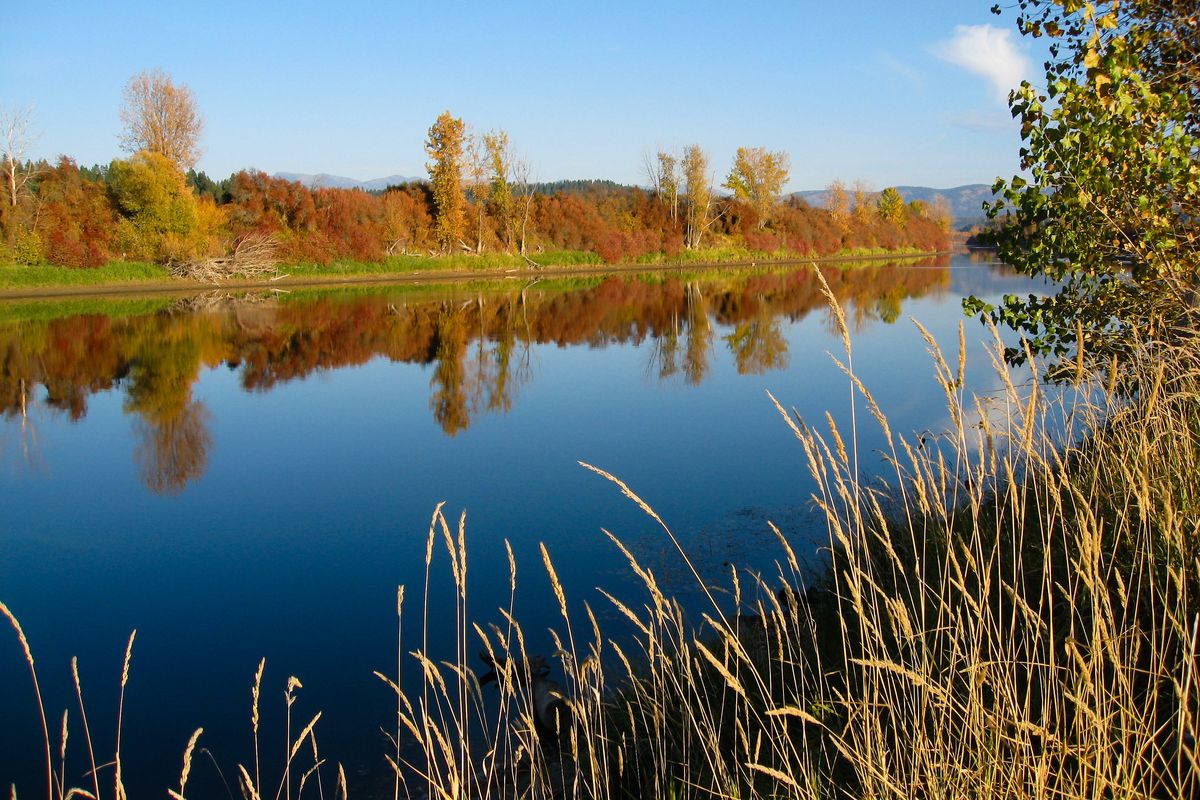Day tripping to Bonners Ferry, Idaho’s Forgotten War
Along with gold, lumber and trains history, area was site of 1974 Indian war Bonner’s Ferry is tied to more than gold, lumber, trains – Kootenai Tribe Declares War on USA, Sept. 21 1974

I feared losing spiritual and intellectual supplication after having lived and worked for decades in Indian Country — Arizona, New Mexico and West Texas – and then moving to the Northwest in 2001.
Something struck me as hollow here: the lack of museums and cultural edifices for Salish people. No Indians in political office. Even Spokane Falls Community College, where I taught, claimed Col. George Wright Drive as its address. Hang Man Creek was just down the road from campus.
A weekend trip to Bonners Ferry, Idaho, less than five months into my tutelage in Spokane, galvanized in me a larger energy than tourist-y activities: the ragged Selkirks; huge patches of wetlands; moose and black bear lumbering out of thimbleberry patches; a dynamic farmers’ market; funky people; plenty of hiking trails.
Did I mention hippies from back east eking out a living in the woods?
Being the journalist-traveler, I looked for and found a bookstore (Bonner’s Books). I quickly became transfixed by one fellow out of the several dozen I had already met. This man – call him Mister Kootenai – proceeded to give me a primer on the town and greater community.
He was Indian but didn’t claim just one tribe. He talked to me about the Indian journeys I had made – Mescalero Apache in Ruidoso, N.M.; White River Indian Reservation in northern Arizona; Navajo land along the Grand Canyon.
He gave me tips on where to see birds, and directions to find out-of-the way places for future trips. I ventured to the Kootenai National Refuge where more than 230 bird species have been observed. It’s less than 2,800 acres, a far cry from the entire wetlands that once encompassed Bonners Ferry, but still, I saw hawks, bald eagles, deer and moose. A 4.5 mile auto loop goes around the marshes and ponds.
He pointed me to Copper Falls and falls along Snow, Myrtle and Smith creeks. He got me to head out to Deer Creek and Deer Lookout, where I saw 75 miles into Canada, their Kootenay Mountains, verdant valleys, soaring raptors, lupine fields, coniferous forestland.
Still, though, this nameless fellow, who was, around six feet tall, in his 50s, displayed introspection. He remained talkative as he looked over my Hopi, Navajo, and Mayan jewelry. I wanted to speak Spanish to him, but knew he wasn’t that sort of Indian.
I had just come in from the Bonners Ferry Farmer’s Market – the oldest in Idaho and now held in the center of town on Saturdays with all sorts of funky Down to Earth-esque crafts, foods, characters and tales.
He saw the huckleberry jam I had just purchased and proceeded to narrate huckleberry picking from an Indian’s point of view: how the bears compete with native people who were now being out-picked by white harvesters heading out to “sacred” spots by the hordes with little idea of the Kootenai Creator’s wish for patience, timing, benediction.
He told me Indians didn’t mind the bears.
Up to the moment before I had run into Mister Kootenai, Bonners Ferry was a funky town in transition, with a lot of moving water surrounding it. There are campgrounds to satisfy outdoor enthusiasts. The Selkirk Crest and Moyie River provide all sorts of summer fun.
What got me to the town in the first place was a friend from Eastern Washington University’s graduate planning program. Gideon Schrieber had lived half his youth here and the rest in Connecticut – splitting time between a hippy mom and her significant other on 20 acres off the grid northeast of Bonners and a dairy farm in upstate Connecticut.
Gideon was a perfect guide and describer of the area’s funky history, as a slew of hippies from Connecticut and other East Coast cities moved out here in the early ’70s to make an alternative go of it.
He knew the nooks and crannies, the places to buy eggs and organic apples. It was a veritable tour of alternative lifestyles and earth ship housing: solar, straw bale, rammed earth, and more.
While all that outdoor activity, camping and antique store browsing can be fun for Spokanites putting in two days exploring this region, Mister Kootenai gave me, in 30 minutes 10 years ago, was a new frame – details of the Forgotten War, waged in September 1974, when Amy Trice, one of 68 members of the Kootenai Tribe, organized a toll along U.S. 95. Her tribe never signed the 1855 Hellgate Treaty, a land grab by the US government from three Northwest tribes.
President Gerald Ford never sent out an emissary, and thus the three-day war began. From 4,000 members in the 19th century to 68 in 1974, with no land, no reservation, no support from the federal government, and a high mortality rate and tuberculosis running rampant amongst them, the Kootenais asked people driving that stretch of highway for a 10-cent toll. Many gave more.
Trice’s action in 1974 brought the Kootenai people land, status as a recognized tribe, and a documentary, aired Aug. 10, 2010 on Idaho Public TV, “Idaho’s Forgotten War: A Lost Tale of Courage” (directed by Sonja Rosario).
Each step taken by me into the natural wonderland around Bonners Ferry is my own mind listening to the struggle of people then and now. Maybe I am a man lost of tribe, but leaping into cedar forests and contemplating sturgeon at the Kootenai Tribe’s hatchery creates some sense in me that wrongs can get righted. Especially through the pugnacious spirit Amy Trice showed 36 years ago in this incredible place.